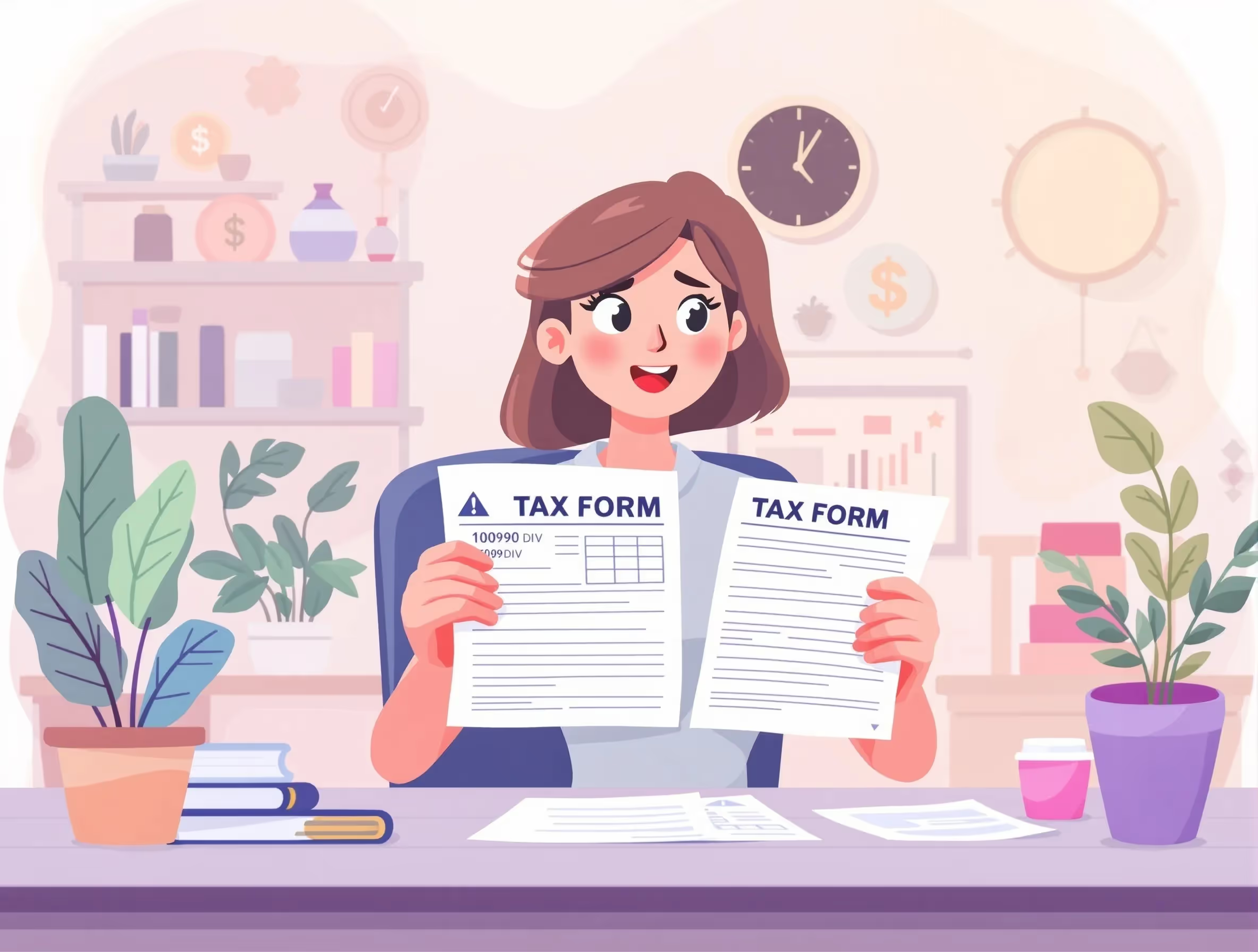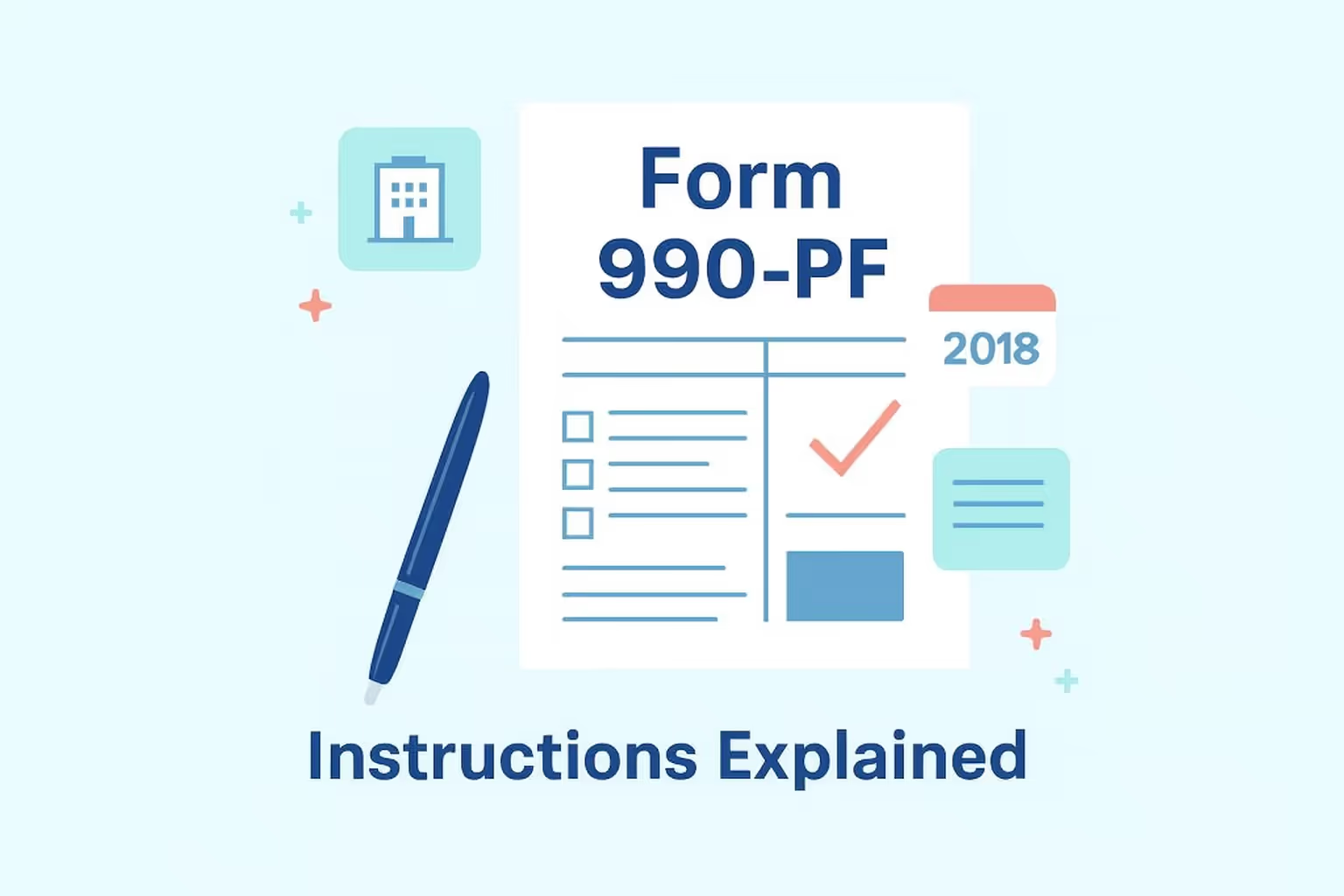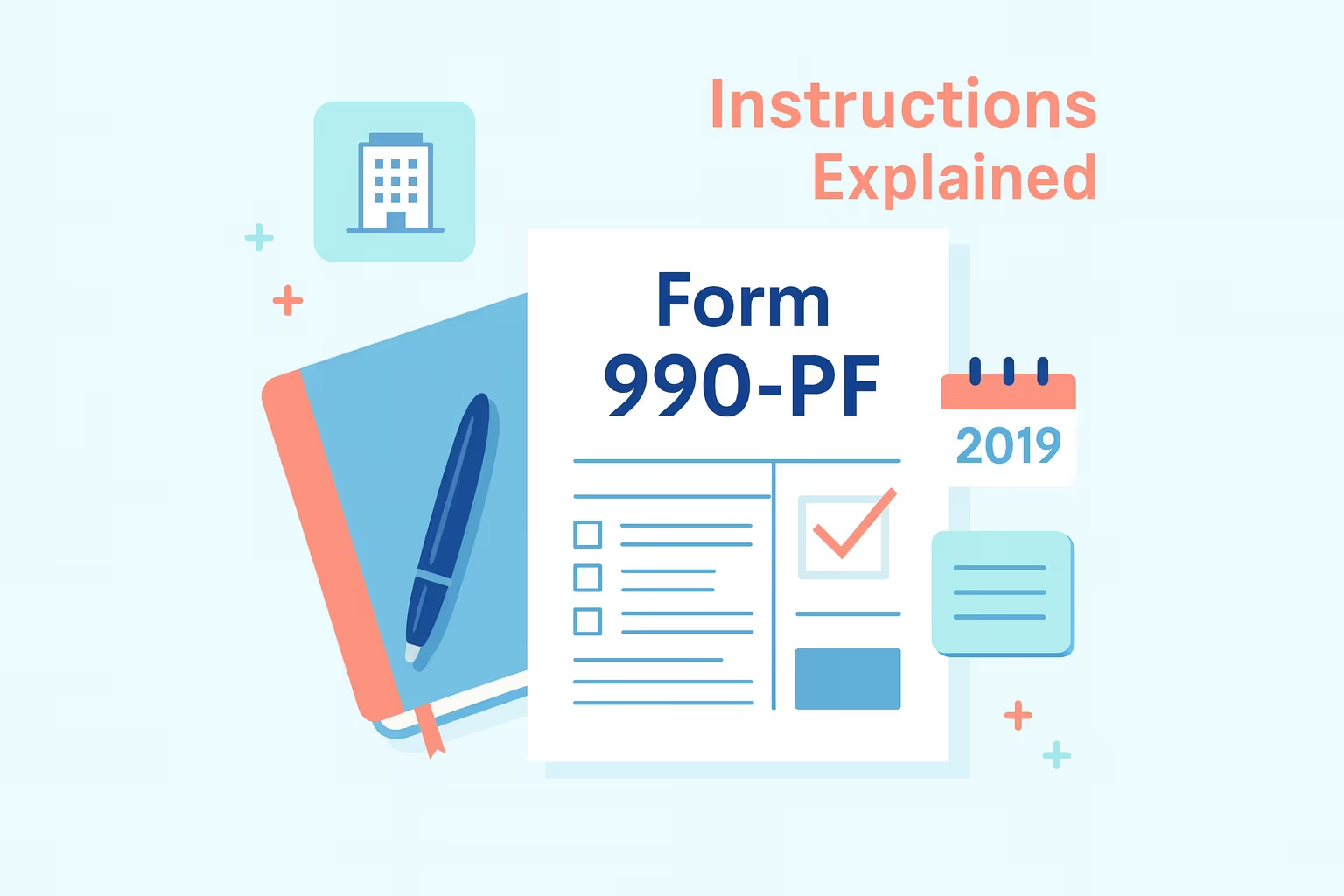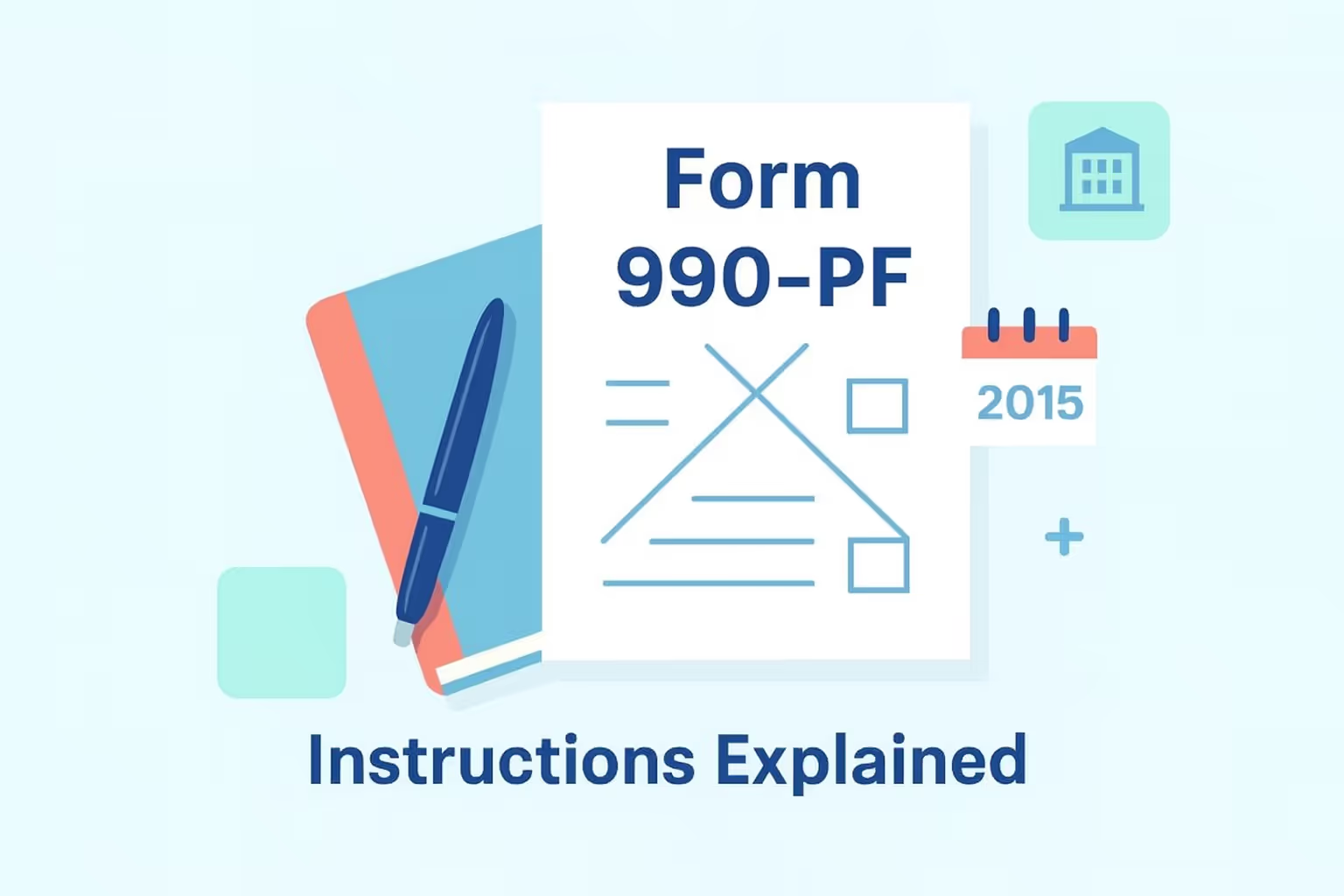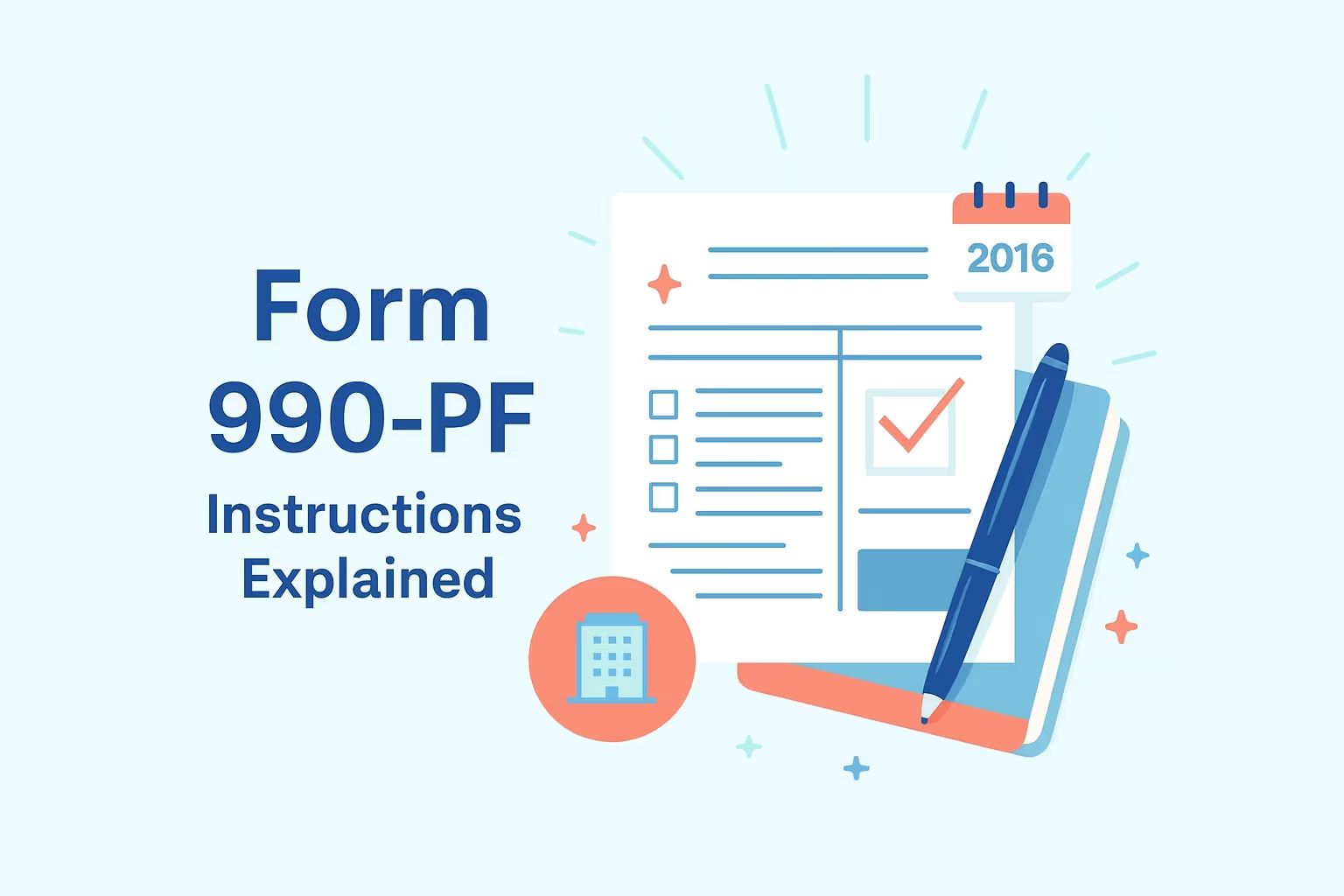
What IRS Form 990-PF (2015) Is For
IRS Form 990-PF is required for every private foundation and any nonexempt charitable trust treated as a foundation, regardless of income or asset levels. The form reports net investment income, investment income, philanthropic distributions, administrative expenses, and the fair market value of net assets for the tax year. It also calculates excise tax based on certain net investment income. It provides the Internal Revenue Service with details needed to confirm charitable purposes, statutory threshold amounts, and compliance with federal rules.
When You’d Use Form 990-PF for 2015 (Late or Amended Filing)
You file the 2015 form when correcting prior years’ reporting or submitting a late return for the organization’s tax year beginning in 2015. This may involve restating adjusted gross income, adjusted net income, capital gain net income, unrelated business income, temporary cash investments, or interest income. An amended filing applies when tax liability, tax paid, or income modifications are incorrect, or when the foundation needs to correct undistributed income or errors affecting excise tax calculations.
Key Rules or Details for 2015
- Excise tax rates: Private foundations paid a 1 percent or 2 percent excise tax determined by certain net investment income. These rates depended on satisfying charitable distributions required under federal law.
- Payout requirement: Foundations calculated required payouts using the fair market value of total net assets. These amounts served adequate charitable purposes and prevented penalties for undistributed income.
- Income reporting: Organizations reported capital gains, interest income, temporary cash investments, mutual funds, and gross rents. These figures affected adjusted net income and helped determine excise tax-based obligations.
- State and federal filings: Filers provided copies to states and the Internal Revenue Service. The submissions included details about the fund balance, donor restrictions, accrued expenses, and balance sheet information, all of which are essential for ensuring compliance.
Browse more tax form instructions and filing guides in our Forms Hub.
Step-by-Step (High Level)
Step 1: Gather records
Collect documents showing investment income, financial instruments, temporary cash investments, and program-related investments. These materials help determine net investment income, net assets, gross income, and related expenses needed for accurate reporting.
Step 2: Prepare the correct form
Use the 2015 IRS form to report adjusted gross income, net income, fair market value, and administrative expenses accurately. This ensures the return reflects the correct tax year and avoids mismatched accounting.
Step 3: Calculate excise tax
Identify certain net investment income, capital gains, unrelated business income, and interest income to compute excise tax. Review tax paid and income modifications to confirm the foundation’s tax liability is correct.
Step 4: Check payout requirement
Verify charitable distributions meet minimum investment return rules and avoid undistributed income issues. Review adjusted net income, fund balance, donor restrictions, and retained earnings to confirm compliance.
Step 5: Attach schedules
Include schedules covering program-related investments, loans receivable, substantial contributors, and related expenses. These schedules help the Internal Revenue Service understand assets, liabilities, and fair market assessments.
Step 6: File and pay
Submit the completed return with any required tax paid, including estimated tax if applicable. Ensure foreign country activities, foreign foundations, and exempt foreign organizations are reported for tax purposes.
Step 7: Maintain records
Keep balance sheet details, accounts payable, prior years’ filings, and the employer identification number available. These records enable tax professionals to effectively respond to Internal Revenue Service inquiries regarding net investment income and investment income.
Learn more about federal tax filing through our IRS Form Help Center.
Common Mistakes and How to Avoid Them
- Incorrect excise tax rate: Filers sometimes miscalculate the excise tax based on certain net investment income, resulting in incorrect tax liability. Confirming income categories prevents inaccurate calculations and unnecessary amendments.
- Missed payout requirement: Some organizations overlook minimum investment return rules, which can lead to undistributed income problems. Reviewing fair market value and adjusted net income helps prevent these issues.
- Income omissions: Missing capital gains, interest income, or temporary cash investments leads to inaccurate gross income reporting. Reconciling investment income ensures consistency with Internal Revenue Service expectations.
- Missing schedules: Omitting program-related investments, accrued expenses, or accounts payable delays return processing. Reviewing the balance sheet ensures all required information appears on the return.
- Missing identifiers: Failing to include the employer identification number or an invalid signature renders the filing invalid. Using a final checklist helps ensure an accurate and complete submission.
Learn more about how to avoid business tax problems in our guide on How to File and Avoid Penalties.
What Happens After You File
After filing, the Internal Revenue Service reviews net investment income, charitable distributions, financial instruments, and excise tax data to confirm compliance. The agency may request supporting documents if figures involving net assets, gross revenue, or administrative expenses appear incomplete. Penalties may apply when statutory threshold rules or undistributed income requirements were not met, though reasonable cause explanations can support penalty relief.
FAQs
How does IRS Form 990 PF 2015 help a private foundation calculate net assets?
The form reports fair market value, fund balance, and retained earnings to determine total net assets. These figures support excise tax and charitable distribution requirements.
Why must a private foundation report temporary cash investments on the return?
Temporary cash investments affect the minimum investment return and net investment income. Accurate reporting helps determine excise tax and required charitable distributions.
How should administrative expenses be reported when fair market value is required?
Administrative expenses are listed with adjusted gross income and net income details. They help verify compliance with charitable purposes and excise tax calculations.
Why must net assets be calculated using the correct accounting method?
The accounting method affects income generated, adjusted net income, and retained earnings. Consistent reporting supports an accurate Internal Revenue Service review.
Does the employer identification number affect retained earnings reporting?
Yes, the employer identification number ensures that retained earnings, fund balance, and net assets are tied to the correct organization.
How does undistributed income interact with minimum investment return rules?
Undistributed income signals whether charitable distributions met federal requirements. It also affects minimum investment return testing and excise tax exposure.
How do foundation managers verify fair market assessments for tax-based reporting?
Foundation managers confirm financial instruments, fair market reports, and donor restrictions. These checks support reliable tax-based reporting for the Internal Revenue Service.
For more resources on filing or understanding prior-year IRS forms, visit our guide on Nonprofit & Exempt Organization Forms.






